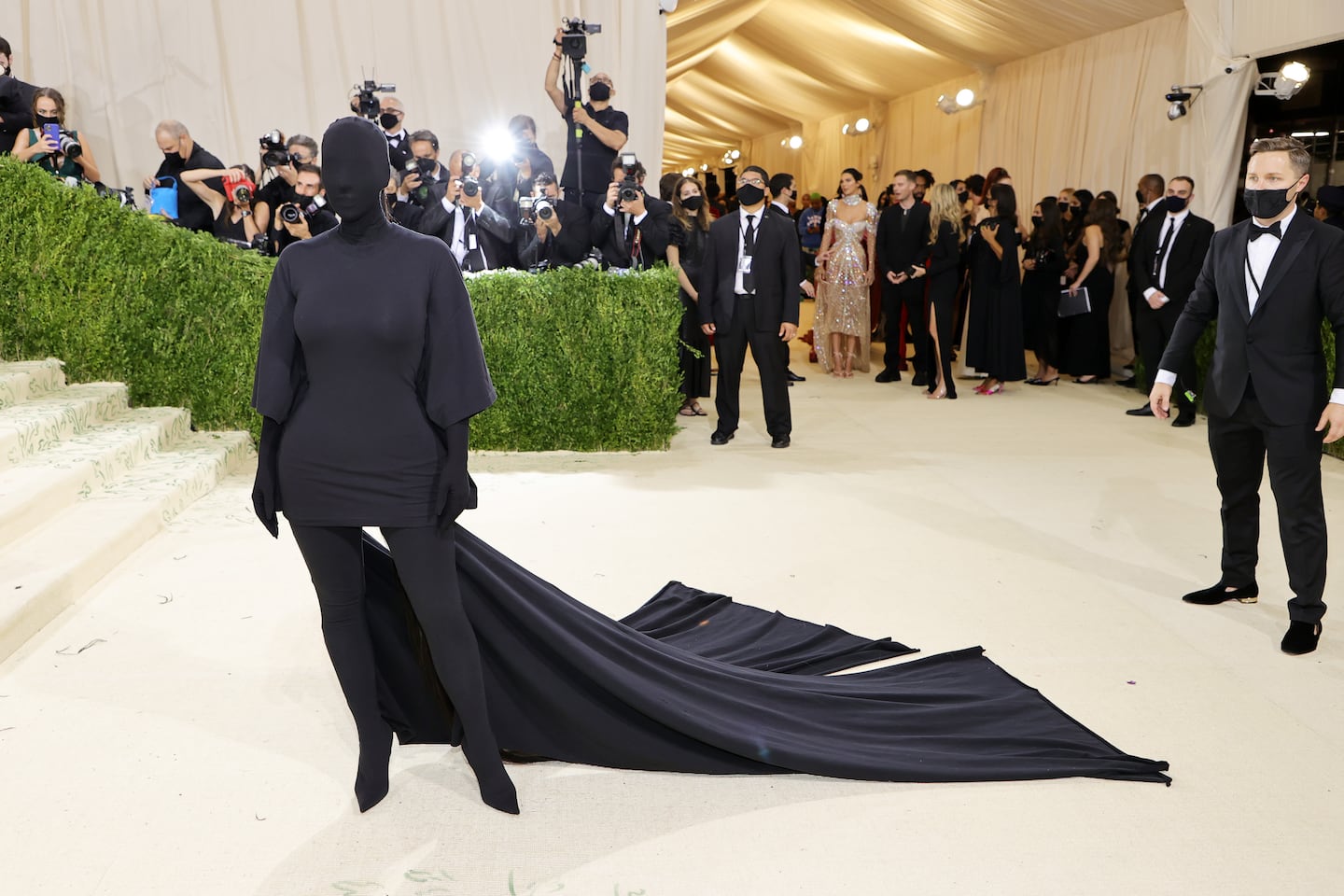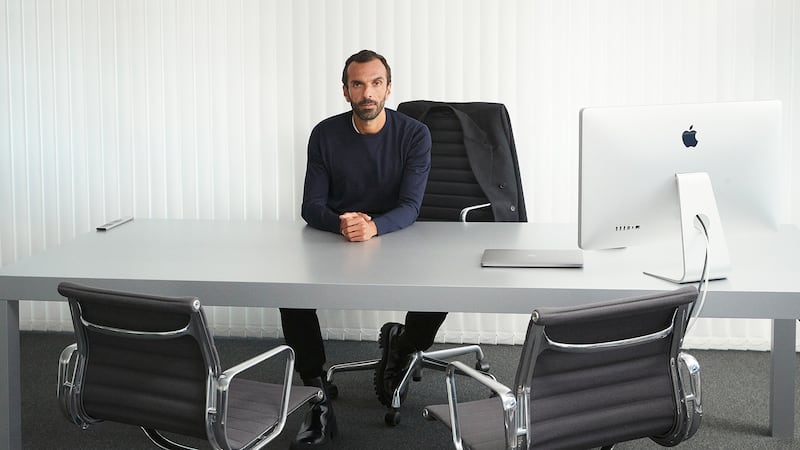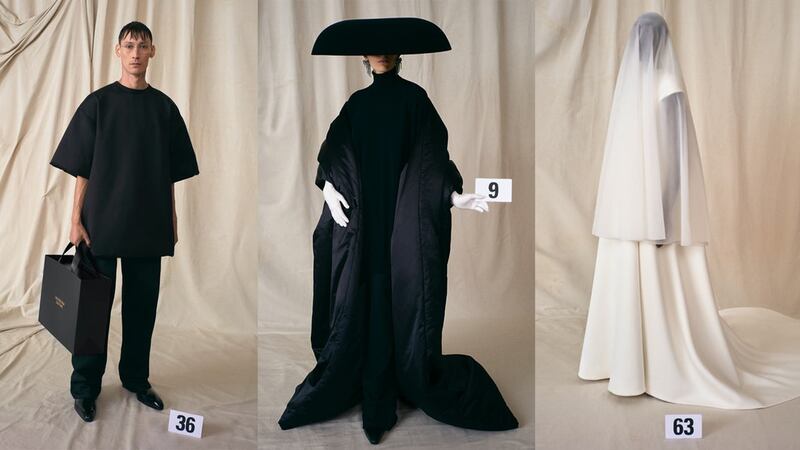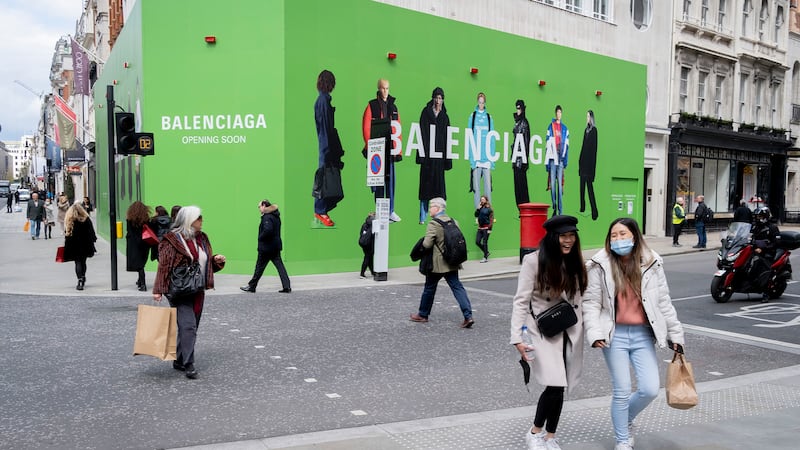
The Business of Fashion
Agenda-setting intelligence, analysis and advice for the global fashion community.

Agenda-setting intelligence, analysis and advice for the global fashion community.

PARIS – When Kim Kardashian West arrived at the 2021 Met Gala shrouded in a black Balenciaga bodysuit and gown covering every inch of her figure — including her very famous face — some spectators were quick to suggest that designer Demna Gvasalia and the social media superstar had ignored the soirée’s theme, “In America: A Fashion Lexicon.”
Upon closer inspection, however, one could argue that Kardashian’s look followed the dress code to the letter: over her bodysuit, she wore a T-shirt (“What could be more American than that?” New York-based creative director Paul Cupo asked). And Gvasalia’s decision to hide Kardashian’s face and cover her in black reduced her to a silhouette, a name, a signifier waiting to be activated — highlighting her role as one of the most powerful marketing vessels in modern American fashion.
The move was a coup. By covering her up, Gvasalia drew even more attention to one of the world’s most famous women and, by extension, Balenciaga. That observers perceived the look as both something and its opposite was typical Gvasalia: his take on fashion is both luxury and street; at once one of the most straightforward and multi-layered propositions in fashion.
Since Vetements-founder Gvasalia took the creative helm at Balenciaga in 2015, adherents to his vision have borne witness to bold and persistent experimentation with construction and silhouettes, with shows that elevated and subverted contemporary dress codes while lobbing socio-political critique.
ADVERTISEMENT
“Just like that, Balenciaga is back,” wrote critic Cathy Horyn after seeing his debut line-up, which introduced voluminous puffer jackets flung back over the shoulders like opera coats, updated skirt-suits and a Margiela-like approach to reworking found objects like market bags and thrift-store hippie dresses. Then there was the lurid palette of carnation pink, princess purple and cadmium red, which, alongside highlighter yellow remain signature colours of the brand.

In the hands of Gvasalia, Balenciaga — whose founder, Cristobal, is said to have invented modern couture — then applied the house’s long tradition of experimenting with volumes to items like hoodies, jeans, and oversized sneakers, rolling out everyday pieces dialled up to runway-ready proportions. By planting Balenciaga’s flag on the booming categories of luxury streetwear and sneakers, and treating them as equally worthy of design attention (and consumer dollars) as stilettos or an evening gown, Gvasalia “changed the trajectory of this brand for the long term,” chief executive officer Cédric Charbit told BoF. “Redefining Balenciaga is helping to redefine luxury.”
But as the business grew, Gvasalia became better known as a merch and sneakers brand to many consumers, who encountered the label primarily through the logo t-shirts, hoodies, caps and hit “Triple S” and “Speed” shoes that were driving sales.
Despite runway shows which evolved toward couture with bell-shaped, enormous crinoline dresses and medieval-armour leggings, the ubiquity of Balenciaga’s merch — both on the street and tagged by hypebeasts on social media — risked overpowering the brand’s fashion message. Aggressive marketing of the sneakers by multi-brand e-tailers surely boosted sales but added to the growing risk that the brand’s DNA was being diluted.
“In luxury, the brand needs to be bigger than any one product,” art director Fabien Baron said. “It’s a pyramid. In order to grow broader at the base, you need to polish the top.”
A recent communications push has helped to re-balance Balenciaga’s brand, ushering in what Charbit and Gvasalia refer to as its “new era.” A hit couture collection dug deep into the brand’s 104-year past, making iconic silhouettes feel relevant while also elevating its current signature shapes like jeans, t-shirts and hoodies to the level of couture. That was followed by a return to the red carpet, where Balenciaga dressed stars at the Cannes Film Festival and the Met Gala (including Rihanna, Tracee Ellis Ross and Micaela Cole in addition to Kardashian) for the first time in five years.

The moves have helped to restore the primacy of Balenciaga’s haute legacy and edgy creative message over its hit products. At the same time, a star-studded campaign with Isabelle Huppert and Justin Bieber makes sure commercial items like its Runner sneakers and Hourglass handbags are never far from sight.
“We want to be clearer that Balenciaga is at the same time streetwear and couture,” Charbit said, speaking from his office in the brand’s Paris headquarters, which shares a campus with owner Kering inside a restored 17th-century hospital complex. “Very few brands have a haute couture positioning with the kind of archive and rich history we do. It’s important to celebrate it.”
ADVERTISEMENT
Streetwear, couture and highly bankable: under Gvasalia and Charbit, sales have exploded. The group (whose other brands include Gucci, Bottega Veneta and Saint Laurent) does not break out revenue for Balenciaga, but in 2019 chairman and CEO François-Henri Pinault congratulated the brand for crossing €1 billion in annual sales. Its revenue has since surpassed €1.5 billion, market sources said, meaning Balenciaga has overtaken Bottega Veneta to become the group’s third-biggest brand.
The pandemic has hardly slowed Balenciaga down. Even as revenue in the wider luxury sector fell by 23 percent in 2020, according to consultancy Bain, a white-hot brand image, e-commerce savvy and the acceleration of casualization in the wider fashion market helped Balenciaga drive both sales growth and margin improvement for the full-year.
Sales are now divided roughly into thirds among handbags, shoes and apparel, while the split between womenswear and menswear is about 50-50, according to Charbit. That even breakdown could suggest a weaker business in womenswear and bags than many of its large-scale luxury peers, but it’s a balance Charbit defends as “healthy and coherent for a modern luxury brand.”
“We’ve seen an explosion of demand for this brand across categories,” said Sam Lobban, Nordstrom’s senior vice president of designer and new concepts. Track and Triple S styles have installed themselves in the business alongside socklike Speed sneakers, while a “massive uptick” in the Hourglass bag has reduced the focus on “City” and “Neo City” motorcycle bags (descendants of the Lariat style which drove the business for more than a decade after being introduced by former creative director Nicolas Ghesquière in 2001).

As it enters its “new era,” cash-flush Balenciaga hasn’t just invested in couture and red carpet marketing, but in expanding its retail footprint, targeting bigger and more visible store locations including openings in Los Angeles’ Rodeo Drive, Shanghai’s IAPM, Miami’s Design District and London’s Sloane Street. A three-story London megastore is currently under construction on a prime stretch of New Bond Street.
The brand has also been dialling up its internet-savvy marketing, adding to the clever campaigns — including parodies of celebrities hiding from paparazzi or dystopian newscasts — which have long been a hallmark of the brand.
When physical runway shows were put on hold due to the pandemic, a viral web video took up the relay, followed by an entire collection released via a video game last December. This autumn, the brand dove deeper into the metaverse, teaming up with Epic Games’ Fortnite to offer players a collection of virtual looks that can be purchased within the hit game. “The way they’ve built out all these touch points is really quite impressive,” Lobban said.
While the Met Gala had lifted searches for Balenciaga, Google Trends shows the Fortnite launch driving a far more dramatic surge.
ADVERTISEMENT

Even before the pandemic scuttled several seasons of traditional, in-person runway shows, sending Kering stablemates like Gucci, Bottega Veneta and Saint Laurent experimenting with new rhythms and formats, Balenciaga had been toying with how and when to present its collections. The brand often showed men and women together, combining pre-collections with the main season or reversing when the collections were shown.
Going forward, the brand plans to split communication investment more evenly across four key ready-to-wear moments in the year, avoiding the industry’s long-standing default that commercial collections arriving in May and December should be smaller and less creative than the ones set for delivery in February and July.
“There’s been such a big gap between pre-collections — where you just shoot it on a cyclorama background and send the look book to Vogue Runway — and the multi-million dollar runway collection where you really go for it. That isn’t cool,” Charbit said.
With fashion editors, buyers and celebrity guests here in Paris for the first in-person ready-to-wear week since March 2020, Balenciaga’s show is set to be one of the season’s most hotly anticipated events as the brand aims to follow up its hit haute couture show and red-carpet winning Met Gala outing. The house has been mostly silent on details for the event set to take place Saturday evening at the Théatre du Châtelet. “Expect the unexpected,” Charbit said.
Related Articles:
Can Balenciaga Modernise Couture?
Redefining Relevance at the Met Gala
Balenciaga and Fortnite Are a Match Made In The Metaverse
The Hidden Links Between Cristóbal Balenciaga and Demna Gvasalia
The Coach owner’s results will provide another opportunity to stick up for its acquisition of rival Capri. And the Met Gala will do its best to ignore the TikTok ban and labour strife at Conde Nast.
The former CFDA president sat down with BoF founder and editor-in-chief Imran Amed to discuss his remarkable life and career and how big business has changed the fashion industry.
Luxury brands need a broader pricing architecture that delivers meaningful value for all customers, writes Imran Amed.
Brands from Valentino to Prada and start-ups like Pulco Studios are vying to cash in on the racket sport’s aspirational aesthetic and affluent fanbase.